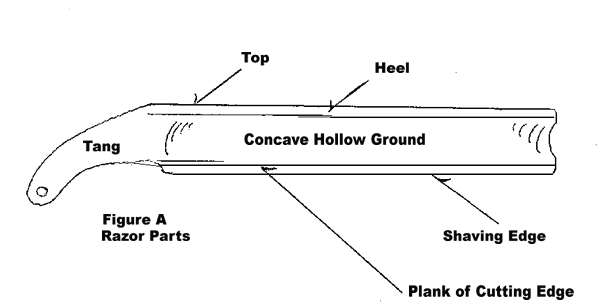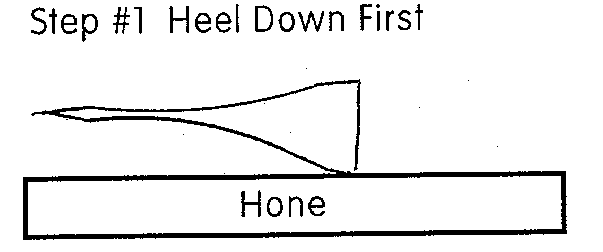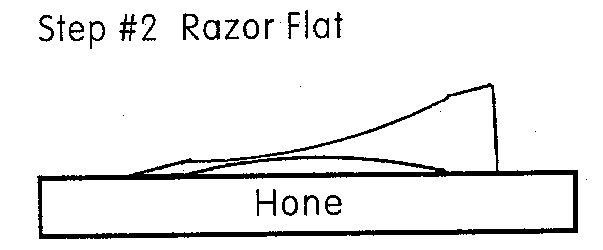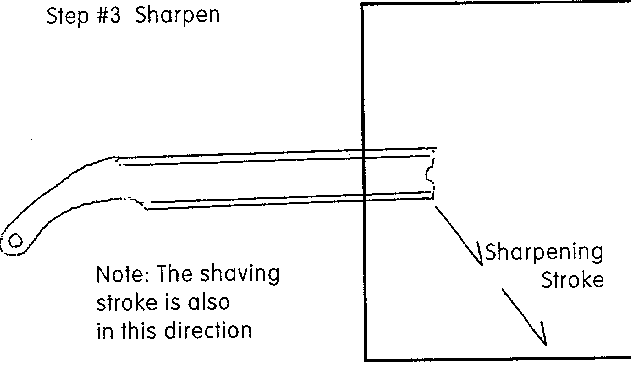|
Muzzle Blasts Online |
|
...for the muzzleloading enthusiast |
|
The muzzleblasts.com domain, subdomains, content, etc., are neither affiliated with the NMLRA nor its paper magazine Muzzle Blasts |
|
Muzzle Blasts Online |

|
|
|
|
|
|
How To Sharpen A Straight Razor

|
Writing this prompts memories of my Grandad shaving. He heated a pan of water on the old cook stove in the kitchen, then splashed it on his face and neck to lube the skin and soften the whiskers. He then flipped his lather brush in the hot water and placed it in the soap mug. After stirring the brush vigorously on the soap cake, a fine lather was produced and applied to the face and neck with the lather brush. At this point he would pick up his old razor hone and sharpen his razor a few licks. After stropping, he would dip the razor into his pan of hot water and begin to shave. When he was done he would dip his hand into the hot water and rinse his face. A towel hung in the bedroom by the dresser mirror. Custom was that a snuff glass (tobacco used to come in drinking glasses) 3/4 full of water sat on the old dresser, and on the water floated a good quarter-inch of wild-root hair oil. He would dip his comb into the glass, and when he pulled it out it held enough oil to comb his hair. A bottle of hair oil would last a couple of years this way. The old ways saved money. No expense after the original purchase of a straight razor and strop. The water was drawn from the well, and the soap was home made. Why shave in the bedroom? The bathroom was sixty yards from the house with no water, mirror, or lights! It did, however, contain a two-inch-thick Sears and Roebuck wish book.
Times change. The old ways are almost gone, along with the skills that made them work. Bic and Gillette, pressure foam, no strop, and automatic hot water are the order of today. Now we shave once a day, while the old-timers shaved on Sunday morning and Thursdays. (The bath was in the creek on Saturday afternoon.) They would line up us kids on the back porch, and we would climb into the same number-two wash tub of water as the one in line before us. If you are last in line, the water is so dirty that you can't see your feet.

|

|
I make my own lye soap - shaving and bath. No, it is not caustic or harsh. It has all the natural skin softeners and moisturizers in it. The lye dissipates after a ninety-day curing time.
Most of the bar soap that you purchase is indeed bar detergent, also made with lye or other caustic. When the detergent, which is made with petroleum rather than animal lard or tallow, is still a hot liquid, a salt is added which causes the glycerin to sink to the bottom of the vat. It is then drawn off and sold separately. This leaves a bar of detergent, which rinses away easily but is very harsh and causes dry, cracked skin. Find some real lye soap and these places will heal. I promise to write about how to make soap in the near future.
Hopefully, at this point you are ready to dig out an old straight razor and try your luck. The razor must be very sharp and clean, the water very hot, and your hand very steady. After a little practice, you to will say that the quickest, cleanest most enjoyable shave is with a straight razor.
Start heating your water. While it is heating, let's sharpen your razor.
To sharpen, first lube your hone with a light oil or water. Your hone may be an antique or the surgical black Arkansas stone. The oil or water floats the metal particles out of the stone. If you use water, keep a pan nearby and swish the hone in it occasionally to keep it clean.
You must know the parts of your straight razor to be able to understand the sharpening instructions. (See figure A). Place the heel of the razor on the hone first, keeping the shaving edge up off of the hone. Now lay the plane of the cutting edge on the hone; the razor is now flat on the hone. The sequence of heel first, then the shaving edge keeps you from ever chipping the shaving edge of the razor. It also keeps you from creating a compound angle on the cutting edge.

|
The microscopic cutting teeth that make up the shaving edge should flow in the direction that you use the razor to shave. On a straight razor the teeth should flow toward the front and away from the tang. As you sharpen, the grit of the hone cuts tiny grooves in the blade, leaving tiny teeth on each side of the groove.
The number of teeth per inch on the shaving edge is directly proportionate to the number of grit per inch on the hone. The finer the hone, the more teeth per inch and the sharper the razor.
Keep the razor flat on the hone for the sharpening strokes. You need to use an equal number of strokes on each side.
To sharpen the reverse side, first lift the shaving edge from the hone and then pick up the razor; now lay the heel of the opposite side on the hone, then the plane of the cutting edge. The opposite side is now flat on the hone. Use the same stroke as before.
Never test the sharpness on the hair of your arm unless you lube it with soap and water. Never dry shave. You will ruin the shaving edge. If you plan to shave on a regular basis, then sharpen a few licks every fourth shave. After sharpening, wash your razor with hot water and dry with towel. The heat in the metal from the hot water will help it dry rust-free. Store in a dry place.

|
Stropping removes no metal. It cleans the particles of metal and grit from between the teeth of the shaving edge, leaving no obstructions to the cutting process.
Always strop after sharpening, before shaving, and after shaving. Strop in the opposite direction from sharpening. Strop one way, then at the end of your stroke lift the shaving edge up and roll it over so that you may strop the other side. Count at least twelve strokes per side.
Here's to you, the old ways, tools, and skills.